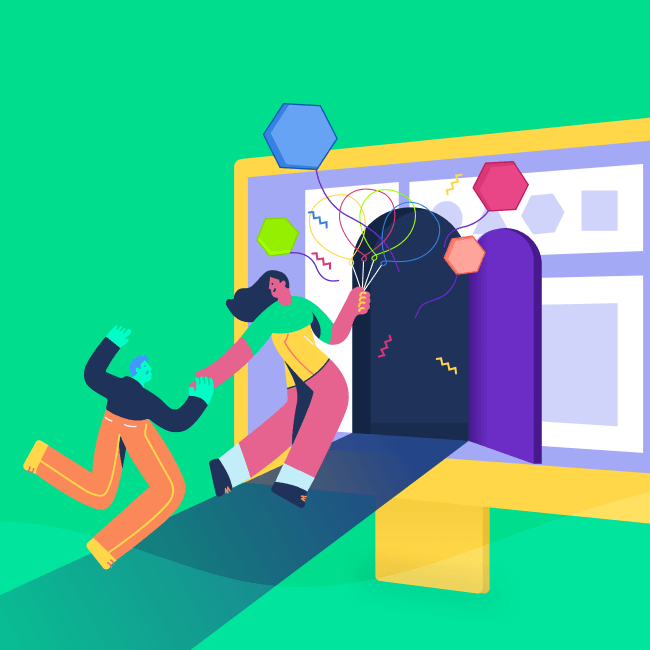5 reasons to place UX at the heart of your performance marketing
August 2, 2021 | Read Time : 3 mins
Table of Contents
We have come across the phrase ‘Customer is King‘ quite often. User Experience is a place where this phase fits quite appropriately. Here’s how focusing extensively on users and their experience on the website helps improve conversions and sales.
- Efficient UX can increase or optimise Conversion rates
- Maximize ROI through UX design
- UX boost SEO ranking
- UX Enhance Customer Loyalty
- UX and Design Thinking can boost Cost Savings
Efficient UX can increase or optimise Conversion rates
The websites are constantly competing on the Search Engine for the top spot. With proper SEO, many websites do achieve the spot, but that’s not enough for Users. Users want sites that are easy to comprehend and navigate through. Users want sites that help them quickly achieve their goals and don’t feel they have to invest time and effort.
For starters, we can agree that the accessibility and design principle of decluttered design, intuitive navigation, correct font size help improve conversion rates.
Maximize ROI through UX design
Online ads are one of the ways to direct users to the site. But that can fail if the users cannot navigate or comprehend what the website has to offer. To tackle the situation, websites have to improve their customer journey map based on data.
Heatmaps and user journey tracking tools help us analyze, journey paths, red routes, drop-off events and help UX designers find problem areas that users face during their interaction with the website.
UX boost SEO ranking
Appropriate keywords or the Keywords Relevancy Index plays a major part in placing the website on top. However, there are over 200 other parameters that Search Engines look for while ranking a website.
To top the list, UI index, accessibility, user experience, intuitive navigation, are a few factors that heavily influence the website rankings. The better the User Experience, the higher the chances of the website ranking on top of Search Engines.
UX Enhance Customer Loyalty
Andy Parker from The Manifest explains, “Good UX strengthens brand loyalty. Providing seamless interaction with a site helps promote strong user activation. As customers explore your website, your brand starts to form long-standing relationships.
Customer loyalty is one of the most significant advantages in the hands of the website. Once achieved, their sales will also increase. With this status, customers will not only visit the website by advertisements or sale pop-ups but also through brand recall i.e direct search.
Customers are less patient when it comes to things on the internet. The attention span has come down to eight seconds, and if a site takes more than three seconds to load, they drop off.
UX and Design Thinking can boost Cost Savings
One cannot be sure if their website/product will be deemed appropriate by users or help achieve the desired Return On Investment.
Here the UX of the website plays an important role. Launching a product requires a lot of capital, and to ensure the money is used appropriately, the business needs to ensure products fit the requirements of a user.
The help of the User Experience process which includes, Research, User Research, Stakeholder Interviews, Wireframe, and User Testing, will help to know how the product can be a better fit in the market and for users.
What is Design Thinking?
Design Thinking is an iterative process in which we understand the user, challenge assumptions, and reframe challenges in order to find new tactics and answers that aren’t immediately obvious based on our current level of understanding.
Simultaneously, Design Thinking offers a problem-solving strategy based on solutions. It is both a way of thinking and working as well as a set of practical techniques.
Design Thinking is based on a strong desire to learn more about the people for whom we are making products or services. It enables us to observe and empathise with the target user.
Design Thinking Phases:
There are several different versions of the Design Thinking approach in use today, with three to seven different phases, stages, or modes.
The five phases of Design Thinking are:
- Empathize — with the people you’re trying to help.
- Define – the needs, the problem, and your insights of your users.
- Ideate – through questioning assumptions and coming up with new answers
- Prototype — this is the first step in developing a solution.
- Test Solutions
What is a User Experience/User Interface Roadmap?
A UX/UI roadmap is a high-level summary of a product’s user experience, user interface, and user research strategies and goals. These roadmaps are used by product teams to ensure that usability is a key focus throughout the development process.
When and Why Would a UX/UI Roadmap Be Necessary?
Customers’ expectations are increasing all the time. In all of their product decisions, product teams must consider the user’s experience. Introducing a fantastic new feature can increase user loyalty and attract new clients. However, if customers find that feature unclear or difficult to use in your app, the feature’s effectiveness may be harmed.
Worse, a bad UX might cause people to have negative feelings about the remainder of your product. A bad product experience can harm your business in a variety of ways. As a result, developing and maintaining a distinct UX/UI roadmap is a wise strategic move.
How to Create a UX/UI Technology Roadmap
Here’s a step-by-step plan for building a UX/UI roadmap.
Define your UX/UI roadmap’s strategy and objectives.
Every road chart is different. Every UX/UI roadmap is the same way. The first step is to figure out what you want to achieve in terms of user experience. To create this roadmap, use the information you’ve gathered.
Double-check that you’re using the correct tool.
Your UX/UI roadmap will almost certainly be updated frequently. You should not create the roadmap with programmes that are built for creating static files such as spreadsheets, papers, or slideshows.
Decide on the strategic themes for your roadmap.
Now is the time to collaborate with your UX and UI teams to set high-level goals and plans. You’ll start by determining the most important strategic elements, or the roadmap’s themes. Then, for each of these themes, you’ll identify the strategic initiatives your team will need to succeed.
Epics are what they’re called, and each theme may contain multiple of them. An effective UX/UI roadmap should include a wide range of topics and pay close attention to numerous key areas, including:
- The user’s perspective
- User interface (UI)
- User-centred design
Establish regular check-in points to assess progress on the roadmap.
Create a plan for the team to reassemble before your UX designers and other members of your cross-functional team begin executing on this UX/UI roadmap. Then you may talk about how far you’ve come with your user-experience strategies and goals, ask questions, express worries, and so on.
One relevant conversation topic at these sessions for a product that is already on the market is what user research reveals regarding the product’s usability. Make use of this opportunity to assess where your product succeeds in terms of UX/UI. It will reveal areas where your team may need to make adjustments. It has an impact on your UX/UI roadmap as well as the product roadmap.






